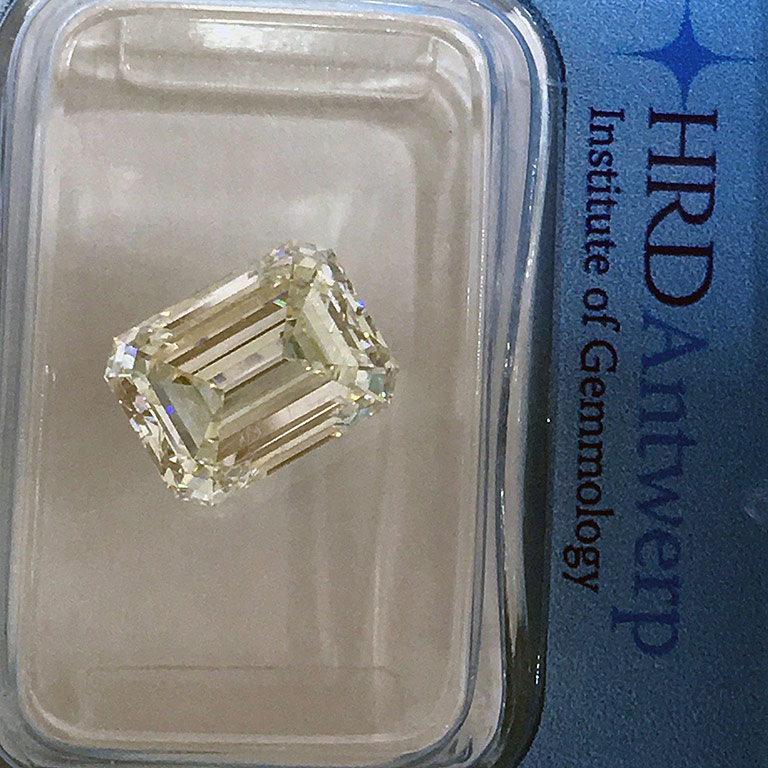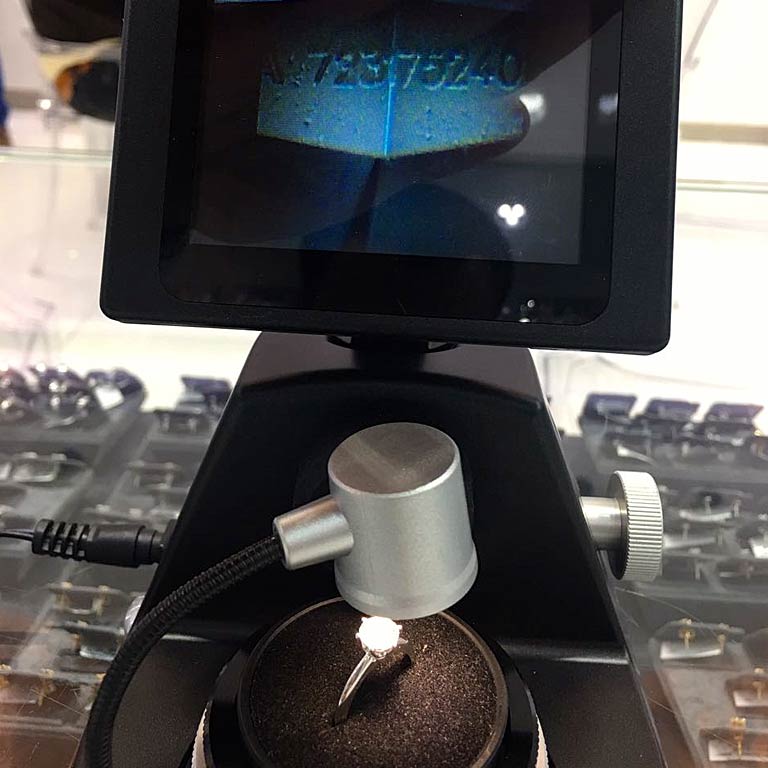
Remarkably, many large diamonds are sold without a certificate. If you ask a question about the gemstone in a jeweller’s store, the answer may be that it is a diamond; at best, it may be described as a Wesselton. To me, purchasing a diamond over 0.50 ct that is described as a Wesselton is just as mad as buying a car that is hidden under a piece of tarpaulin. Ask the salesperson what type of car it is and they reply that it is a car and that it is a white, colourless type, perhaps slightly yellowish grey. Who would agree to a deal based on that simple description?
Two diamonds of equal size can have very different values, depending on their respective quality, cut, colour and a whole range of other factors. It is impossible to give a price for a diamond if you know nothing about it. I have lost count of the number of times that I have been asked: “So what does a diamond cost?” I usually reply: “The same as a car.”


The certificate shows – among other things – the size, symmetry, proportions, colour and cutting grade of the diamond, as well as the type and location of any inclusions in the diamond (this is shown on the certificate if the diamond exceeds 1 ct). There can be a large difference in price between two apparently similar VS2 diamonds, and this, of course, affects the price of the piece. If you wish to compare the prices of diamonds, you will need access to all the information, as well as only comparing diamonds from the same institute. Most institutes offer a lot of information via their websites. There, you can enter the number of the diamond and see the certificate online.
The GIA is the most selective institute, and for this reason GIA-certified diamonds are more expensive. A GIA diamond graded as H, S1 may be graded as G, VS2 by the IGI. We usually recommend the GIA, although we also work with the HRD and IGI.
One of the reasons why we are happy to recommend the GIA is that they began working at an early stage solely with diamonds approved in accordance with the Kimberley process, i.e. not blood (conflict) diamonds.
Now they have taken a further step and can offer information on where the diamond comes from. The diamond is meticulously monitored and checked from the time it is found to the time it is processed and graded. You can buy your diamond with even greater peace of mind and see which country the diamond comes from.


The diamond has a laser number on the girdle that is visible only using a loupe or microscope. It is reassuring to know that you really have received the diamond that you paid for and that it cannot be mistaken for another.
The certificate is a document of value and should not be mislaid. Sending in the diamond in order to obtain a new certificate is a long-winded and expensive process. You cannot simply send an e-mail to the GIA and ask for a new one, for example.
The certificates and certification methods are refined over the years, so the appearance of the certificate is being constantly updated. You may therefore find certificates with slightly different appearances, even though they came from the same institute.